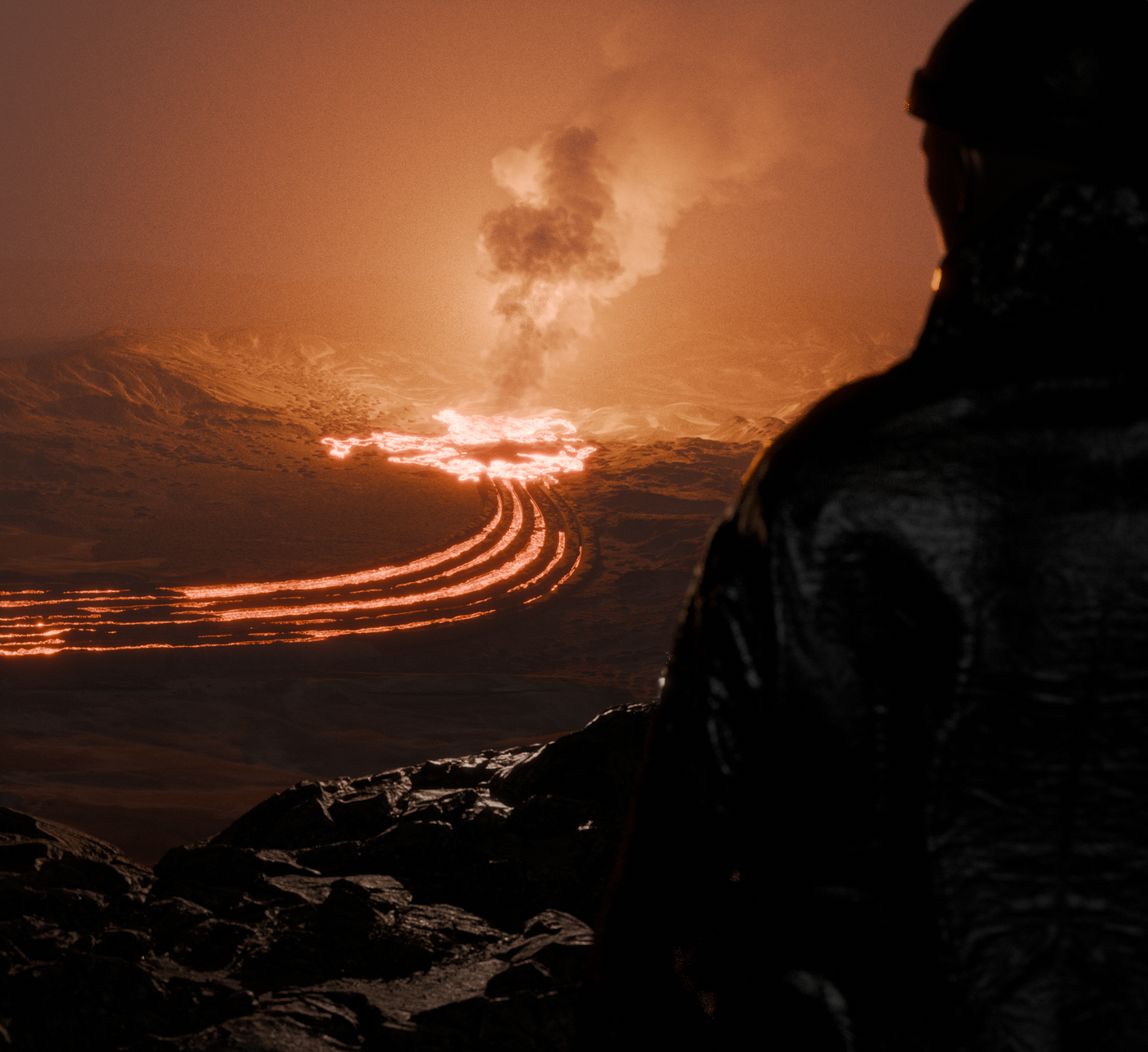Many of us remember the eight days in April 2010 when European airspace was closed due to the eruption of Iceland’s Eyjafjallajökull, a reminder of the constant threat posed by the country’s volcanoes. Indeed, among the exhibits at the Arsenale this year is Volcanic Infrastructures (Cristina Parreño Alonso, J. Roc Jih, and Skylar Tibbits), which considers how Iceland’s power plants and other critical installations might be protected from eruptions without resorting to environmentally damaging, material-intensive solutions. At the Icelandic Pavilion, Pálmadóttir and Skarphéðinsson wonder if, in fact, the answer might not lie within the volcanoes themselves. What if the huge amounts of material that burst forth from the Earth’s crust every year could be channeled as a naturally occurring building material? What would a city made from poured lava look like?
As architect Logi Einarsson — today Iceland’s minister for culture, innovation, and higher education — pointed out at the pavilion’s opening ceremony, the country has never had much in the way of construction materials. Historically, with no forests, the only source of timber was driftwood, and the tiny fishing nation has no tradition of building with the hard-to-work basalt that forms when lava cools. Traditional homes used earth, turf, and found timber. Since the mid-20th century, concrete has dominated Icelandic construction, sometimes with basalt as aggregate, though that involves smashing and crushing it, which raises the concrete’s already poor carbon footprint.
With lava, however, Iceland may have a readymade low-carbon solution for a whole range of its construction needs, since the magma that emerges red-hot from the Earth’s crust is capable not only of forming solid basalt masses but, if it cools rapidly, glass-like obsidian; moreover, basalt can also be used to make weavable fibers that are stronger than carbon fiber. “So the walls, windows, roof, and insulation could all be made from the products of lava,” explains Skarphéðinsson. As such, the result might be a sort of mono-material, pre-fabricated basalt-and-obsidian structure, a solution that contrasts sharply with attempts at low-carbon building in other parts of Europe, where a heterogeneous mix of materials tends to be the norm.
